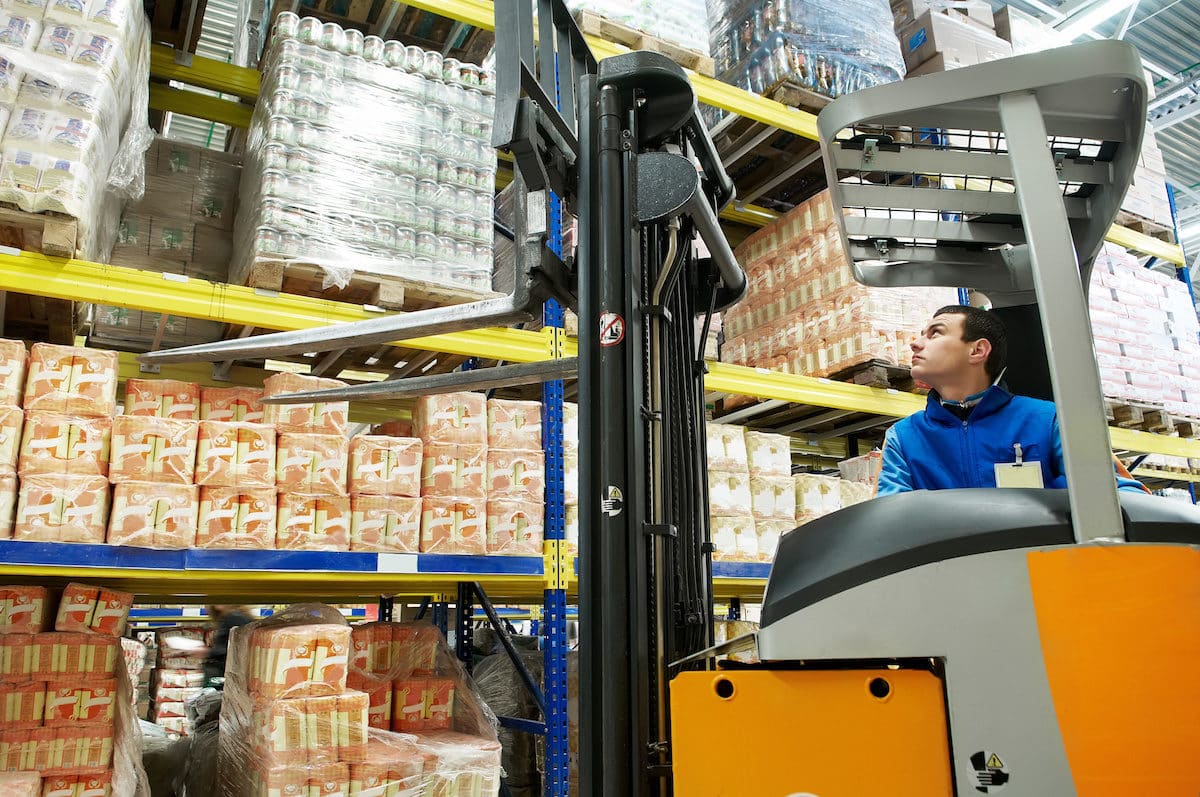
Caution! The Top 6 Dangers Risked in Forklift Jobs
June 18, 2018 | Career Blog
Forklift accidents are one of the most serious causes of injury in the warehouse industry. People tend to underestimate just how dangerous the vehicles can be, mostly because employees get so used to being around and operating them on a daily basis. The reality is, incidents that occur with forklift trucks are nothing to take lightly as they have often resulted in fatalities. In order to be sure you are safe when employed in forklift jobs, you will need to become extremely familiar with the common dangers involving them and the safety precautions that can help to prevent accidents from taking place.
Common Forklift Job Dangers
The top 6 most common dangers are:
- Staff and/or visitors being hit by lift trucks
- The vehicle crashing into another object or vehicle
- Objects falling from lift trucks onto staff and/or visitors
- Lift trucks toppling over onto staff/and or visitors
- People falling from the truck or other parts of the vehicle
- Being crushed by the mast and overhead guard
Other incidents that do occur, but are not quite as common, involve pedestrian’s feet getting run over and drivers operating unstable trucks. An unstable truck posts the risk of toppling over and injuring the driver or a passerby.
Important Safety Precautions to Follow
Whether it’s the employer, supervisor, or the individual employed in a forklift job, each person is responsible for knowing the Rider Operated Lift Truck Code of Practice. Health and safety laws require management to take specific approaches in order to reduce the risk of the occurrences above, including:
- Reporting, investigating and carrying out measures necessary in order to ensure incidents do not repeatedly occur
- Assessing how effective the safety measures are that are already being taking and making any adjustments that are needed
- Performing inspections on a regular basis to determine if forklifts need any maintenance or servicing and ensuring action is being taken when they do
- Noting each and every area, when, and who it is that will be using a forklift per day
- Identifying all existing risk factors
- Documenting any decisions, plans, and observations made for evidence of the efforts being carried out to reduce the risks associated with forklifts as much as possible
- Monitoring the forklifts at all times and ensuring that pedestrians are not in the area while they are being operated
- Ensuring that each forklift has a warning device installed that will sound an alarm when a person should steer clear of the movement of the forklift
- Providing training to all of those in forklift jobs, including refresher training that is in compliance with state legal requirements for the specific training of these employees
- Providing training when a new forklift is brought in to ensure each employee is familiar with the truck as the controls tend to differ and some come with varying attachments
- Providing training for new or altered work environments
- Ensuring all forklift operators have a relevant forklift license
- Ensuring that there are always training manuals and manufacturer information that is updated and available for the employees
Your Supervisor’s Responsibility
Those who are supervising forklift jobs are responsible for implementing all of the systems, policies and procedures within the team they are overseeing. They must also set an example by behaving the way every employee on the crew is expected to behave. They must demonstrate what needs to be done in order to work safely. These are responsibilities that are required by law and could result in serious fines if they are not being followed.
The law requires that workers must be given all necessary adequate information, training, and instruction. The work instructions and safety procedures all forklift drivers are required to perform include:
- Scanning the area for any pedestrians or other forklifts before starting their truck
- Immediate reporting of any issue or damage to the supervisor
- Checking that the forklift is in safe working order before using it
- Completing a checklist as part of a pre-operation routine
- Using the forklift for the job it was designed for and nothing else
- Wearing their seatbelt
- Staying within speed limits and obeying stop signs
- Protecting eyes with safety glasses or goggles from dust or debris
- Using caution on ramps and inclines
- Sounding the horn when going through a doorway or entering another area
- Not carrying any passengers
- Checking the load before starting
- Not driving with a raised load
In Conclusion
As a worker in an industry that has potentially-dangerous equipment, it’s important to thoroughly understand all of the safety requirements and practice safe habits. There are a lot of risk factors in the warehouse industry, and forklift jobs tend to be where most of the serious accidents occur. While your supervisors must be on top of their game to ensure that everyone is working safely, you need to be cautious as well.
For more information on forklift work, check out our warehouse industry page. And check back to our job postings regularly. We are always looking for safety-minded individuals who are looking for employment!
